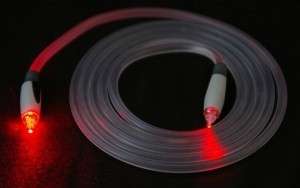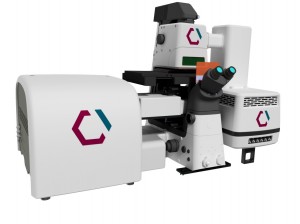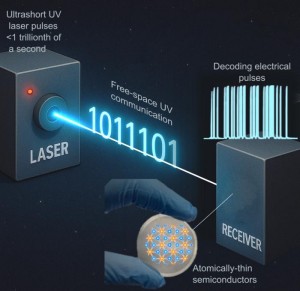
NTT Corporation (NTT) and Kitami Institute of Technology, part of the National University Corporation Hokkaido Higher Education and Research System (KIT), have achieved a groundbreaking milestone related to the delivery of power for high-speed communications. The collaboration has successfully delivered electric power exceeding 1W to a remote location over more than 10 km using a single optical fiber. This achievement marks the world's first instance of maintaining high-speed and high-quality communication while transmitting power through an optical fiber.
This technological breakthrough paves the way for extending high-speed optical communication to underserved regions, including areas without electrical power, and establishing emergency communication methods through optical fiber in disaster-stricken situations. Details of this pioneering research will be presented on Oct. 4, 2023, at the 49th European Conference on Optical Communications (ECOC), the world's largest international conference on optical communication technology, taking place in Scotland.
In today's world, optical communication technology and wireless access are essential for high-speed data communication. However, providing power to remote areas to establish base stations for radio access and optical communication transmitters and receivers remains a challenge. Additionally, natural disasters such as earthquakes, floods, fires, hurricanes and typhoons, may result in prolonged power outages, underscoring the need for rapid communication in affected regions.
To address this issue, researchers have been investigating the transmission of two types of optical signals—one for communication and another for power supply—through a single optical fiber. Traditional technology limited the distance over which power could be supplied to drive optical communication devices to under 10 km due to optical fiber input light intensity constraints1. NTT has been at the forefront of research and development in multi-core optical fiber (MCF)2, a key technology for enabling high-capacity optical transmission within the framework of IOWN (Innovative Optical and Wireless Network)3.
This study utilized MCF, which consists of four optical paths (cores) with the same diameter as the commonly used optical fiber for communication, to achieve the world's highest self-powered transmission capability The MCF employed in this research matches the thinness of existing optical fibers, with each core exhibiting transmission characteristics identical to those of standard optical fibers. As such, it can be seamlessly integrated with existing transmission equipment for conventional optical communication (i.e., optical communication not requiring optical power supply). Each core can function independently, avoiding optical signal interference between cores, allowing for core allocation to power supply, communication or both.
In this study, to maximize optical power supply, a 1550 nm wavelength light source was introduced into four cores. Additionally, two of the four cores were allocated both up and down signals with a wavelength of 1310 nm, facilitating bidirectional optical communication. The configuration allowed for two sets of two-core combinations, creating two separate communication systems.
The capacity of optical power supply can be expressed as the product of transmission distance and supplied power. In this research, MCF was leveraged to maximize power supply per unit cross-sectional area and mitigate return light, which can degrade power supply efficiency. As a result, after transmitting MCF over a distance of 14 km, approximately 1W of power was obtained. This achievement translates to an optical power supply capacity of 14 watt/km, setting a world record.
Moreover, this study demonstrated bidirectional optical communication with a self-powered transmission rate of 10 Gbit/s, the highest currently offered for general users in optical communications. The configuration of one system with two cores for upstream and downstream communication maintained excellent transmission characteristics after 14 km of transmission. When assessing the product of transmission speed and distance as a performance indicator for self-powered transmission, this research achieved a world-leading performance of 140 Gbit/sec�»km.
The results of this experiment show that the use of multi-core optical fibers, which have the same characteristics as current optical fibers, can support both conventional long-distance high-speed optical communications and optically powered bidirectional optical communications.






























 Back to News
Back to News



























